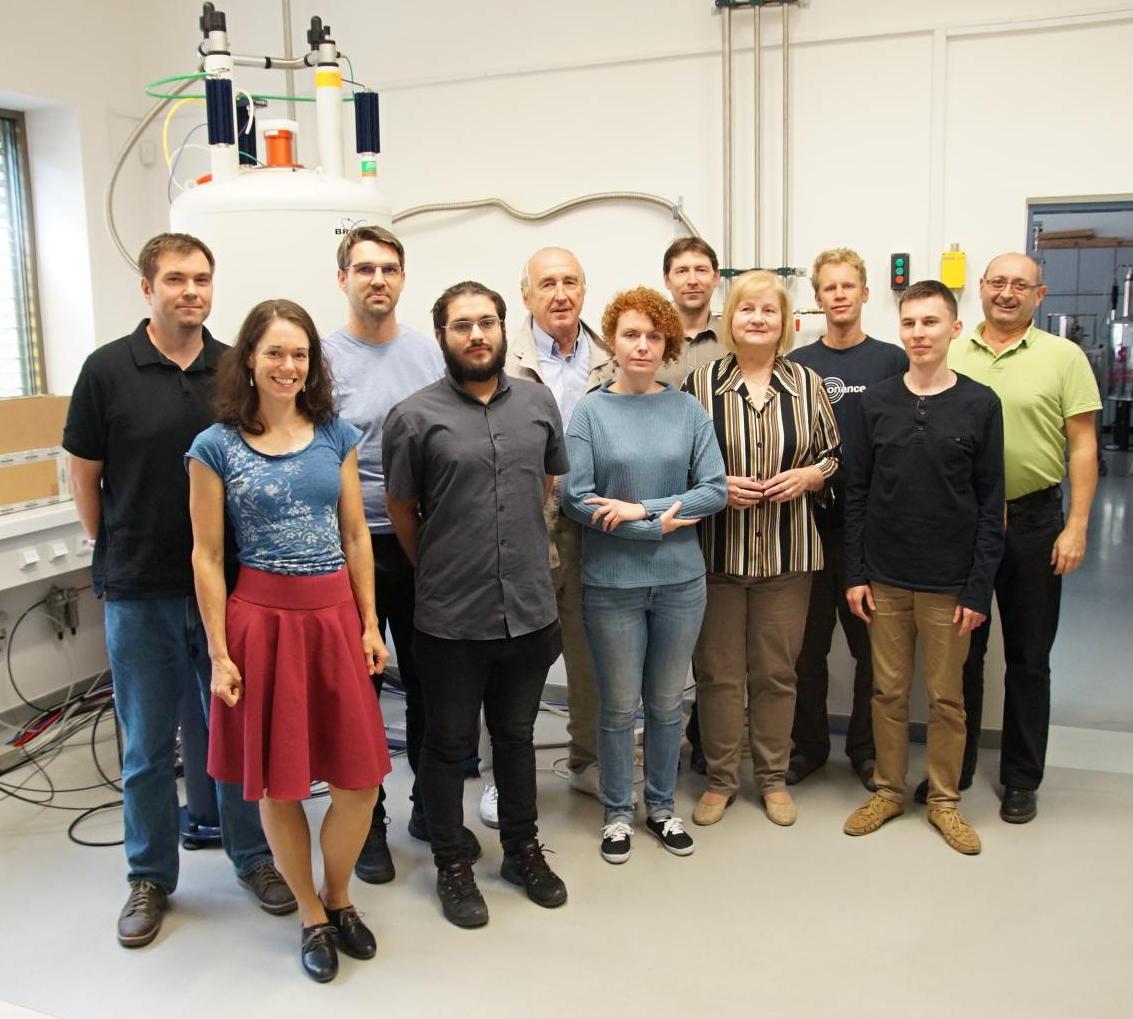
Laboratory of Radiofrequency Spectroscopy
DLTP MFF UK
V Holešovičkách 2, 180 00 Praha 8
Tel.: +420 951 552 773, Fax.: +420 951 552 567,stepankova@mbox.troja.mff.cuni.cz CZ
Laboratory of Radiofrequency Spectroscopy
Laboratories of nuclear magnetic resonance (NMR) operate on several modern spectrometers focused on high resolution spectroscopy in liquids and solids and on a broad-band spectroscopy within large range of temperatures. Nuclear magnetic resonance spectroscopy is a fairly universal non-radioactive method that uses magnetically active atomic nuclei of suitable isotopes as local probes in a measured substance. It is applied when studying the atomic, electron and magnetic structures of diverse substances and materials.
The NMR spectra are primarily sensitive to the arrangement of atoms and the electron structure around the resonating nuclei, making it possible to obtain information on the structure at the atomic level. Dynamic behavior can also be monitored, e.g. internal movements in molecules or diffusion of atoms and molecules. The equipment also allows tomographic microimaging of objects (MRI).

The current projects follow several research guidelines. Unique are NMR studies of magnetic materials, materials with reduced dimension or substances showing structural phase transitions, magnetic reorientation transitions and magnetoelectric phenomena. A significant part of the activities is the study of the dynamics and structure of organic molecules and biomolecules in solutions, non-binding interactions (hydrogen bonds) in supramolecular complexes, and the impact of paramagnetic ions and stable radicals on relaxation processes. The modern direction of research is the application of NMR to monitor the transport-structural properties of porous materials.